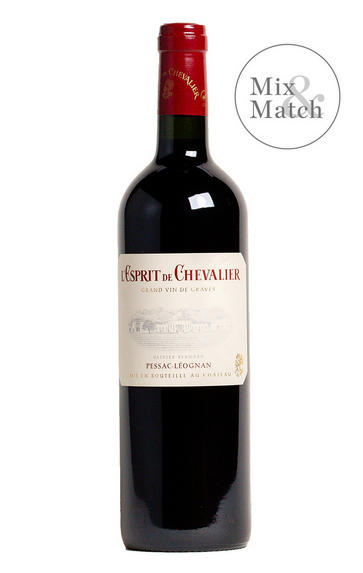
2016 L'Esprit de Chevalier, Pessac-Léognan, Bordeaux
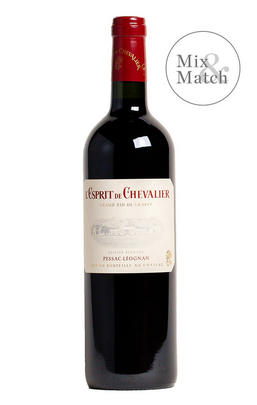
Critics reviews
Neal Martin, vinous.com (December 2018)
Lisa Perrotti-Brown MW, Wine Advocate (November 2018)
James Suckling, JamesSuckling.com (April 2017)
Jane Anson, Decanter (December 2018)
Jeb Dunnuck (February 2019)
About this WINE
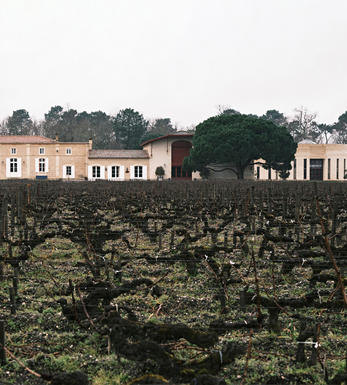
Domaine de Chevalier
Domaine de Chevalier is one of the few Graves estates to produce both first class reds and whites. The property was purchased by the Ricard family in 1865 and remained in their hands until it was bought by the Bernard distilling company in 1983. Domaine De Chevalier has 35 hectares of vines and red wine accounts for 80% of the production. Made from a blend of 55% Cabernet Sauvignon, 40% Merlot, and 5% Cabernet Franc, the wine is fermented in temperature-controlled, stainless steel vats and then matured in oak barriques (50% new) for 18 months.
Domaine de Chevalier is fortunate to have such a fine team to run its affairs. Olivier, whose family business owns the estate, is the outgoing but canny administrator whilst Rémi Edange is hands-on, knowing every vine and every barrel. Whilst their white wines have always been amongst the very finest, the reds were simpler affairs. But from the 1995 vintage onwards greater flair and concentration was in evidence. The quality curve is now further accentuated by the team's bold move to appoint Stéphane Derenoncourt, of La Mondotte fame, as consultant winemaker. Domaine De Chevalier is classified as a Graves Cru Classé.
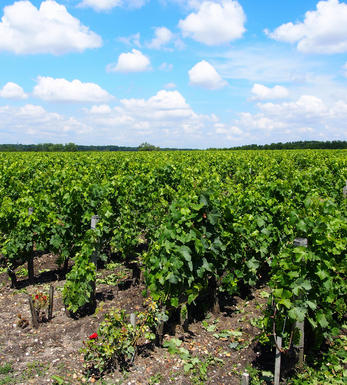
Pessac-Leognan
In 1986 a new communal district was created within Graves, in Bordeaux, based on the districts of Pessac and Léognan, the first of which lies within the suburbs of the city. Essentially this came about through pressure from Pessac-Léognan vignerons, who wished to disassociate themselves from growers with predominately sandy soils further south in Graves.
Pessac-Léognan has the best soils of the region, very similar to those of the Médoc, although the depth of gravel is more variable, and contains all the classed growths of the region. Some of its great names, including Ch. Haut-Brion, even sit serenely and resolutely in Bordeaux's southern urban sprawl.
The climate is milder than to the north of the city and the harvest can occur up to two weeks earlier. This gives the best wines a heady, rich and almost savoury character, laced with notes of tobacco, spice and leather. Further south, the soil is sandier with more clay, and the wines are lighter, fruity and suitable for earlier drinking.
Recommended Châteaux: Ch. Haut-Brion, Ch. la Mission Haut-Brion, Ch. Pape Clément, Ch Haut-Bailly, Domaine de Chevalier, Ch. Larrivet-Haut-Brion, Ch. Carmes Haut-Brion, Ch. La Garde, Villa Bel-Air.
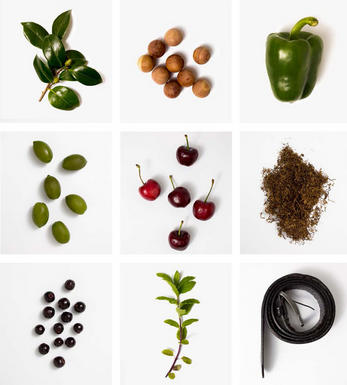
Cabernet Sauvignon
The most famous red wine grape in the world and one of the most widely planted.
It is adaptable to a wide range of soils, although it performs particularly well on well-drained, low-fertile soils. It has small, dusty, black-blue berries with thick skins that produce deeply coloured, full-bodied wines with notable tannins. Its spiritual home is the Médoc and Graves regions of Bordeaux where it thrives on the well-drained gravel-rich soils producing tannic wines with piercing blackcurrant fruits that develop complex cedarwood and cigar box nuances when fully mature.
The grape is widely planted in California where Cabernet Sauvignon based wines are distinguished by their rich mixture of cassis, mint, eucalyptus and vanilla oak. It is planted across Australia and with particular success in Coonawarra where it is suited to the famed Terra Rossa soil. In Italy barrique aged Cabernet Sauvignon is a key component in Super Tuscans such as Tignanello and Sassicaia, either on its own or as part of a blend with Sangiovese.


Buying options
Add to wishlist
Description
This is the second wine of Domaine de Chevalier, one of the few crus classés of Graves classified for both its red and white wines. The domaine is a single 51-hectare block in the far south of the appellation. L’Esprit comes from young vines; the 2016 is an equal blend of Cabernet Sauvignon and Merlot, with 10% Petit Verdot. The nose entices with blackberry, cherry, leather and tobacco. The palate is medium bodied with fine, silky tannins. Enjoy it with steak frites or a venison burger. Drink now to 2028.
(February 2021)wine at a glance
Delivery and quality guarantee